|
|
| Resting eggs |
Concerning the reproduction of rotifers there are two groups: While the Bdelloids or Digononta (which have two germovitellaria) reproduce exlusively asexually by obligate parthenogenesis, the Monogononts may reproduce either by parthenogenesis or sexually.The Monogononts therefore have different types of eggs. The eggs that are produced while reproducing parthenogenetically are diploid and are either carried by the female (eg. Anuraeopsis, Brachionus), deposited near the sheath (eg. Collotheca; Ptygura) or they develop inside the mother untile the daughter is born (eg. Asplanchna; Rhinoglena). These eggs are called amictic eggs, becaues they develop without mixis (fertilization partenogenetic reproduction enables the population to increase rapidly because there is no need for finding a sexual partner, which is always an advantage if the distance between specimen is large, eg in lakes or ponds.) The other type of reproducing is sexually by mictic egg. These eggs are haploid.
|
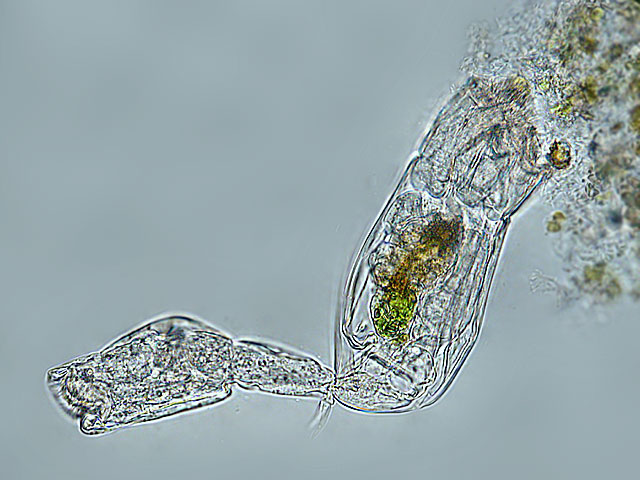 |
|
| Cephalodella gibba, mating behavior. |
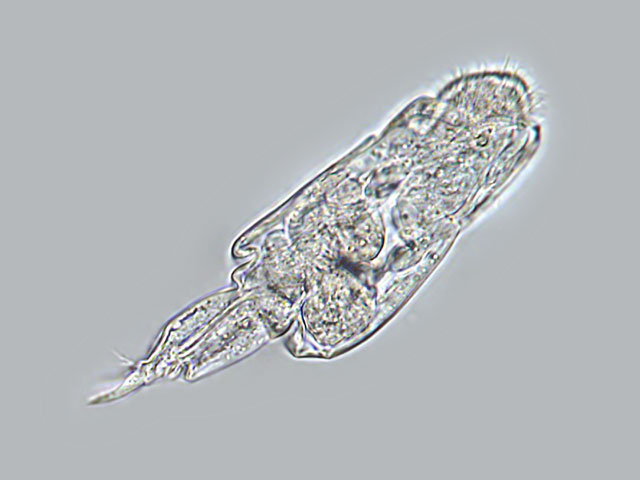 |
| |
| Asplanchna priodonta, male |
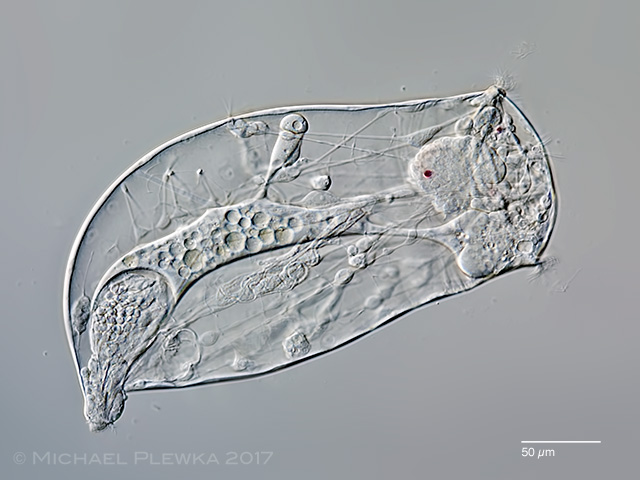 |
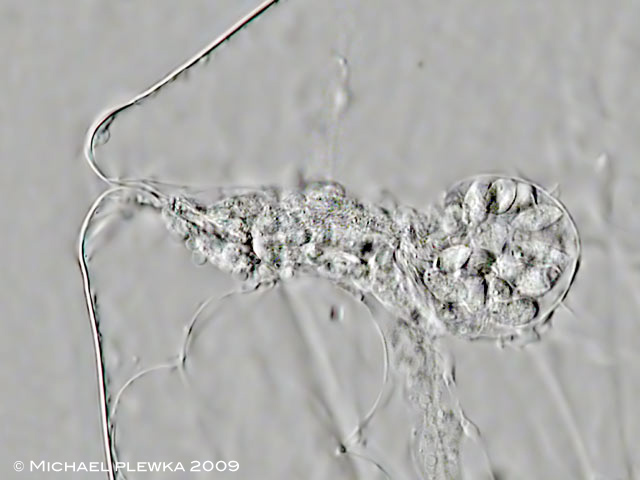 |
| Asplanchna priodonta, male |
|
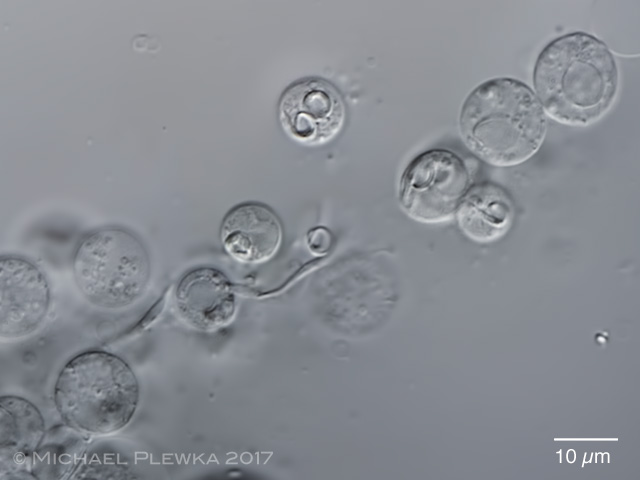 |
| Asplanchna priodonta, sperms / spermatocytes. |
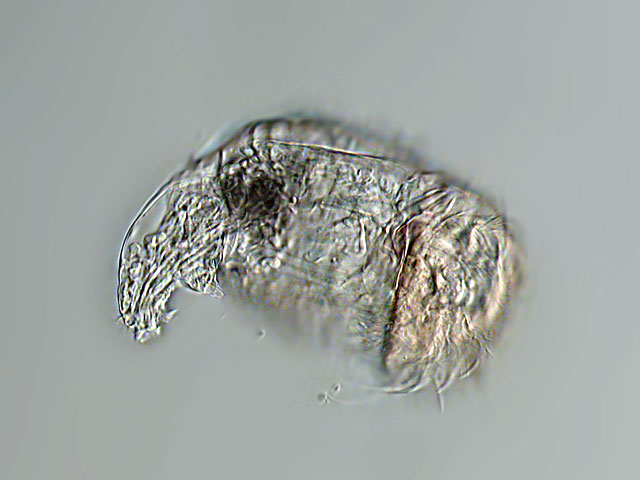 |
| Brachionus sp., male |
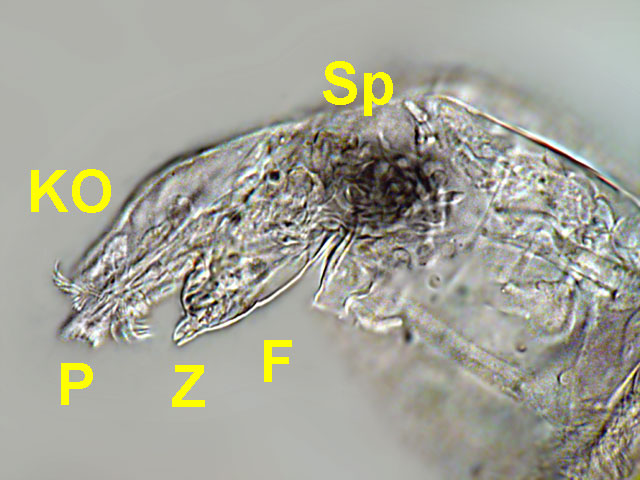 |
| Brachionus sp., male; reproductive organs: F: foot, which is ventral of the copulation organ (KO) and the penis (P). Sp: sperms; Z: toes. |
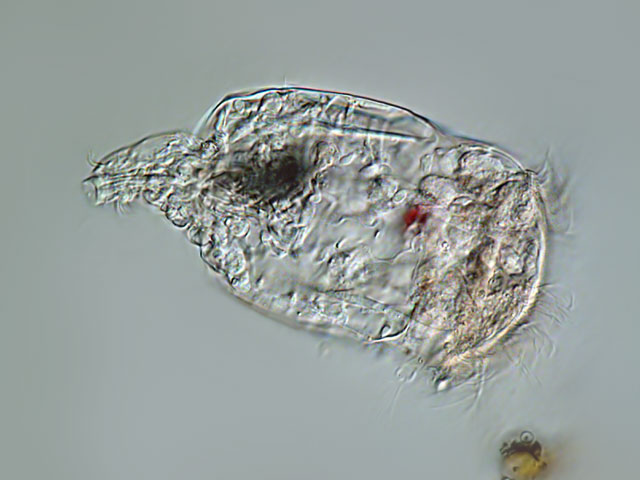 |
| Brachionus sp., male |
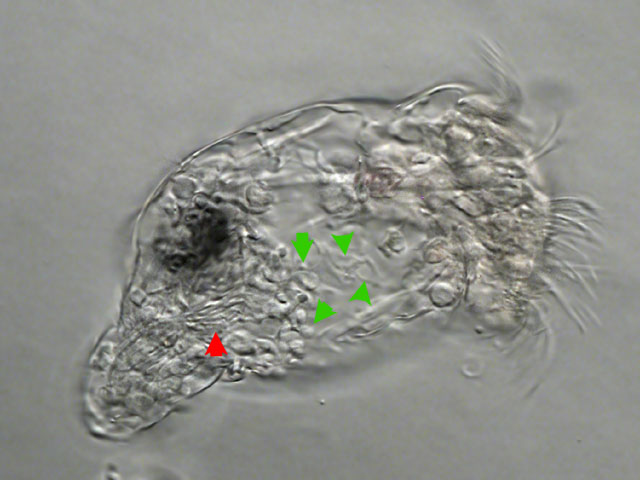 |
| Brachionus sp., male; the red arrowhead points to the rods, which supposedly help the spermatocytes (green arrowheads) to intrude through the body integument of the female. |
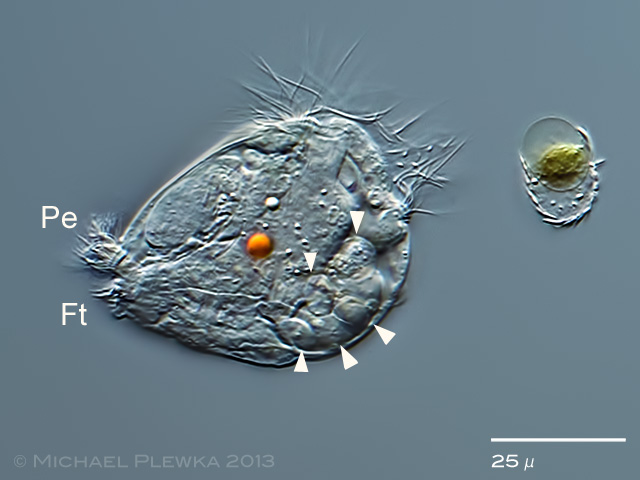 |
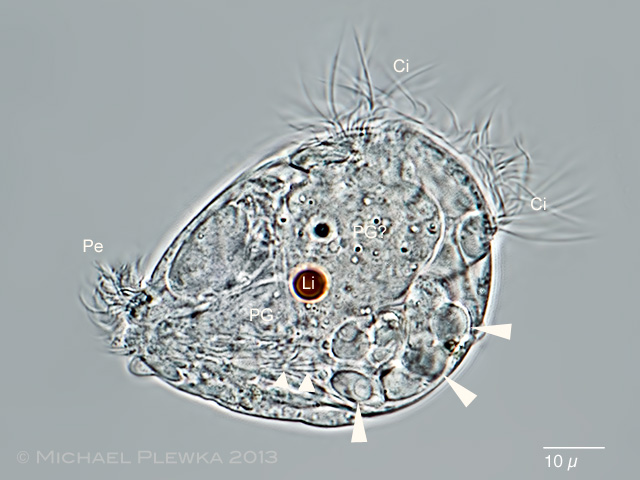 |
| Polyarthra vulgaris, male; two images. Ci: Cilia for locomotion. Pe: penis; PG: penis gland; Li: lipid droplet. the arrowheads point to the spermatocytes; the triangles to the rods. |
| |
| |
| |
| |
|
|
|
|